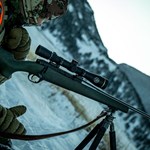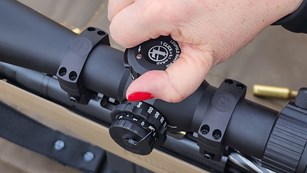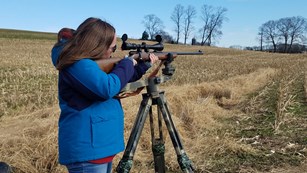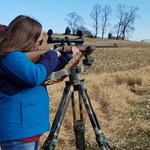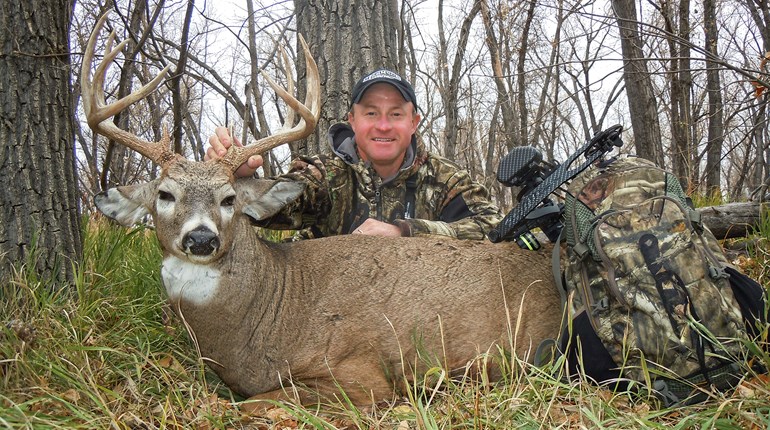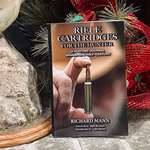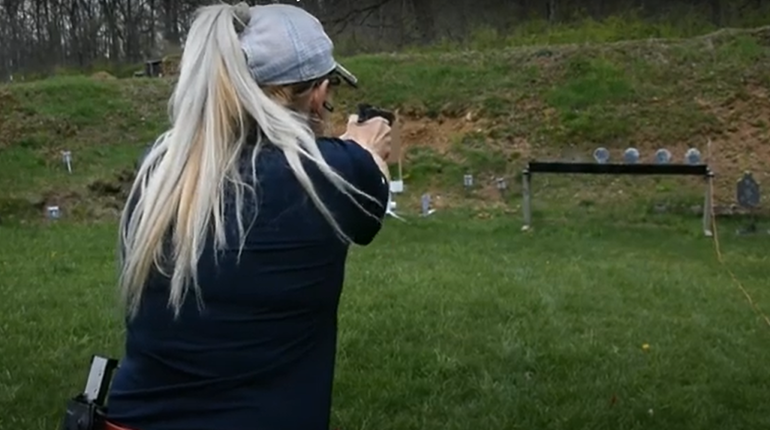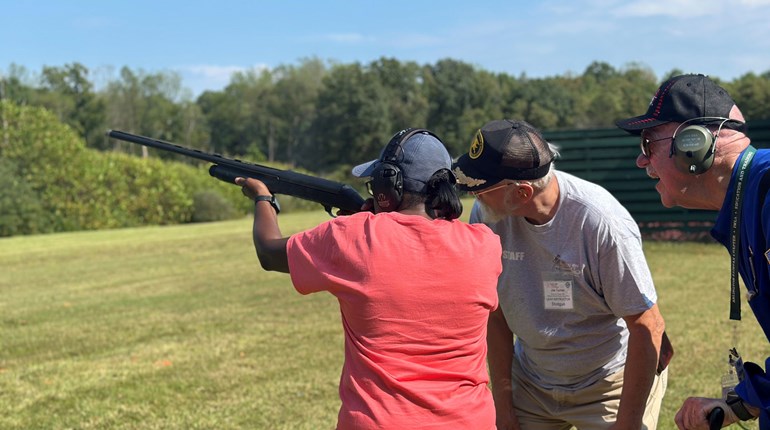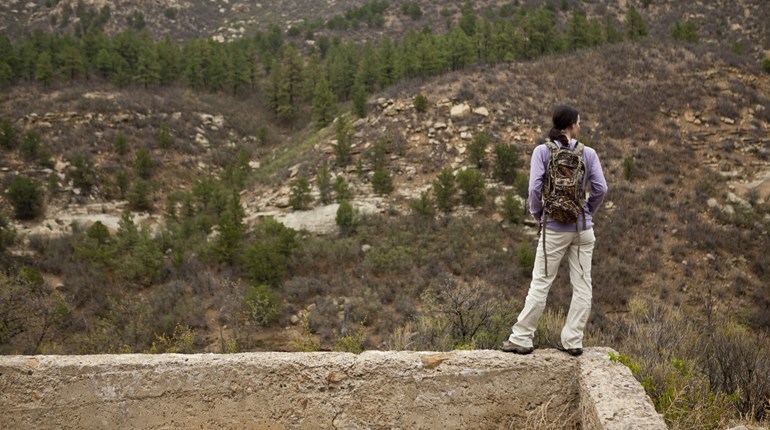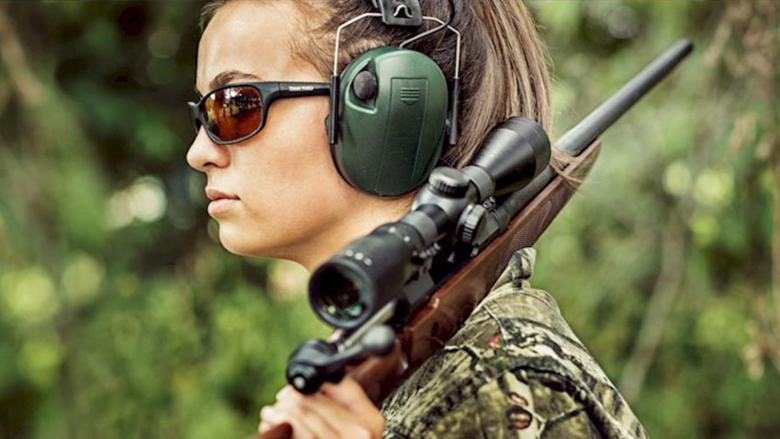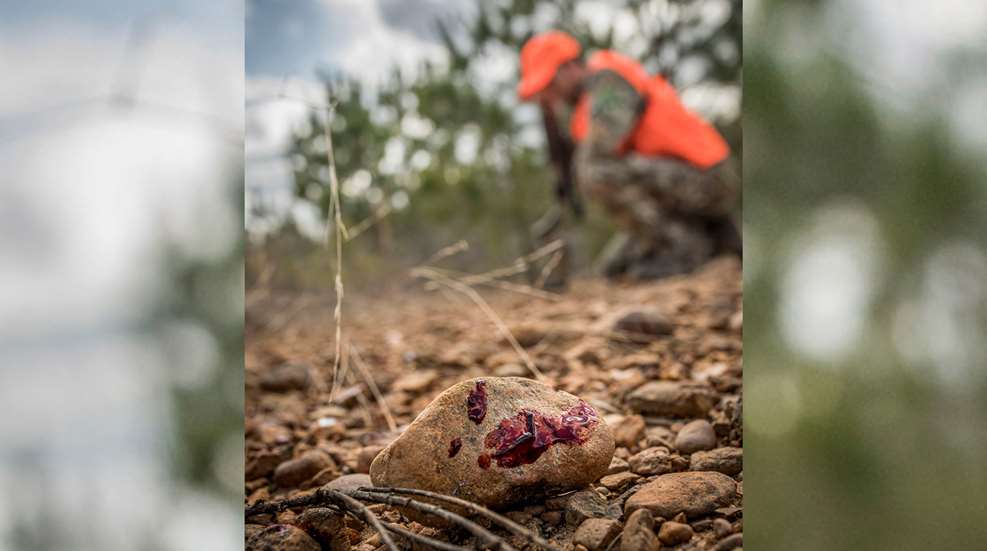
Blood-trailing a deer is both art and science. You can make the job easier by taking a couple of steps before the shot. First, assuming you have time, make a mental note of where the animal is standing—pick out a specific tree or other landmark if possible that will help you find this spot later. Second, after you shoot a deer, whether with a rifle, slug gun or bow, watch it run until it disappears from view, and pick out a specific landmark that will help you remember the last place you saw the animal. Listen for a crashing-through-brush sound that might indicate if he’s fallen down. If you think of it (I’m always too excited to remember this), whip out your phone and take a photo of the two landmarks from your treestand and put a little dot or circle on the photo. Once you hit the ground, it might be a lot harder than you think to find those landmarks, and you might actually have to climb back into your treestand to re-orient yourself.
If you’re rifle hunting and you know it was a good hit, you don’t need to wait long, because the deer will probably expire quickly. Just collect yourself, calm down, unload your firearm and safety climb down. If you think it might have been a marginal hit or if you are bowhunting, give it a bit (30 minutes to an hour is a good guideline) before you start trying to find the animal. You don’t want to spook it up before it dies, because it’ll only run farther.
Now, head to the spot where the animal was standing and try to find a splash of blood from the initial hit. If you’re bowhunting, which is primarily where this advice is going to be helpful, see if you can find your arrow. Take a good look at the blood you find on the arrow, the ground and the nearby shrubbery, because it can tell you a lot. Here’s what you might find:
Lots of bright red blood: This is what you’re hoping to find; it’s the next best thing to a deer that dies on the spot. Bright red blood with a normal consistency—smooth, not thick, not watery—indicates a heart shot, particularly if there’s a lot of it. A deer shot in the heart with a good arrow/broadhead combination will not live long at all. This doesn’t mean he’s super close, because even a fatally wounded deer can cover quite a bit of ground in the few seconds it takes him to bleed out, but he will be within a few hundred yards. Go get him.
Small amounts of bright red blood: This could indicate a muscle hit, which might or might not be fatal. It’s your decision what to do next based on where you think the arrow hit him: Give him some time to bleed out, or go chase him, taking the risk of bumping him out of his bed, until you can determine if it’s a superficial wound that will heal or you can find him and deliver a fatal hit.
Pinkish or bright red, frothy blood: Bowhunters like frothy or bubbly blood because it indicates a lung hit. A lung-hit deer will expire quickly, although as with a heart-shot deer, he can still cover some ground before he piles up.
Dark red blood, possibly thick: This is more than likely a liver shot. It’s probably a fatal hit, especially if there’s a good bit of blood, but a liver-shot deer can live for a little while (maybe an hour or more) before succumbing to his injury. Wait at least an hour, maybe two or three, before you pursue him.
Smelly, chunky, greenish, browning, yellowish, or watery blood: Uh-oh—he’s probably gut-shot. This deer will more than likely die, but it could take hours, and he could cover a lot of territory if he’s pushed by you or by a circling predator. You can’t risk tracking him too soon, because if he spooks, you could be chasing him to the other side of the county. You’re going to have to wait several hours—five or six minimum—or even overnight before you take up the blood trail.

